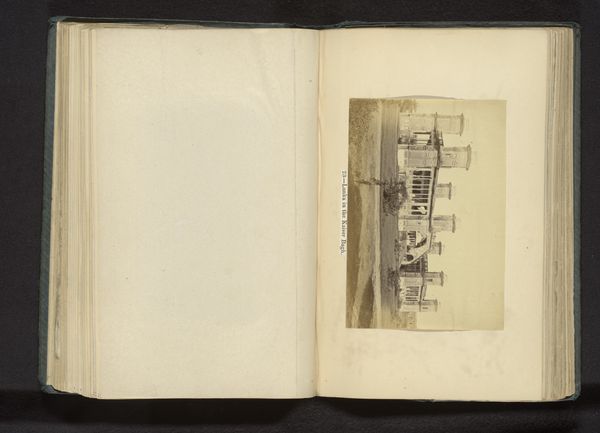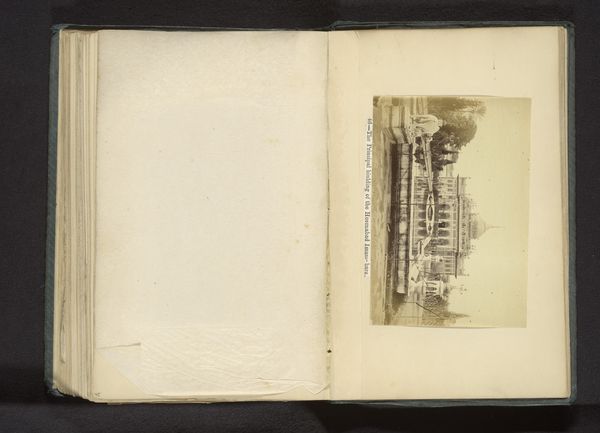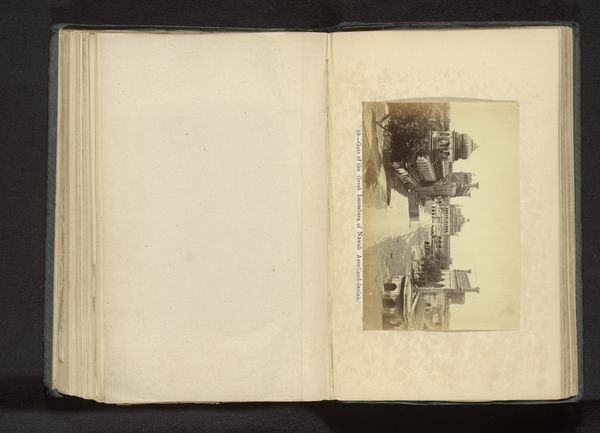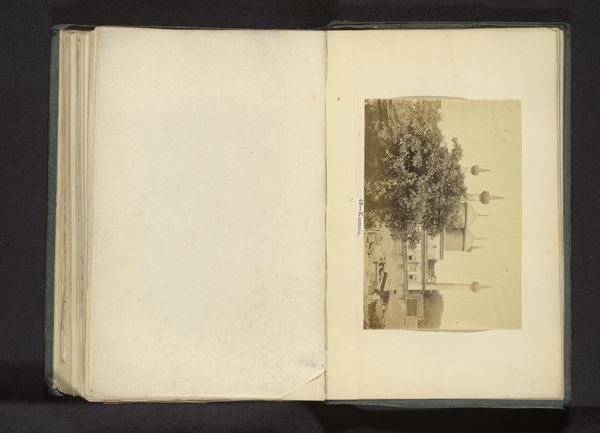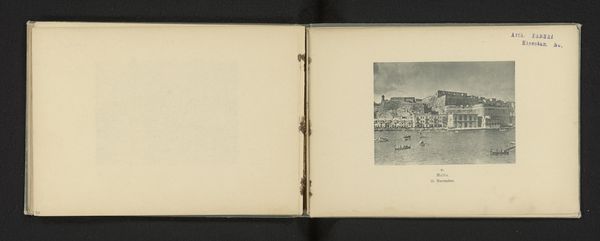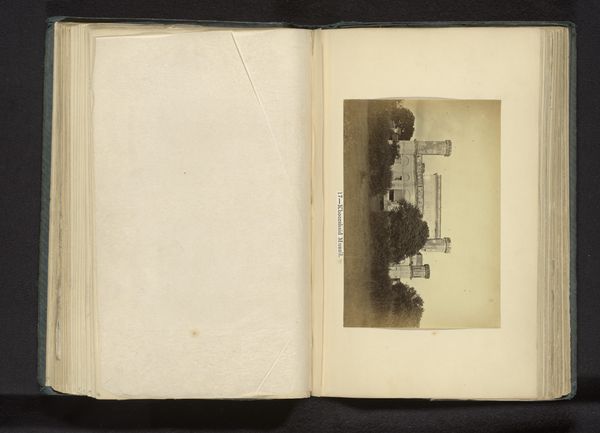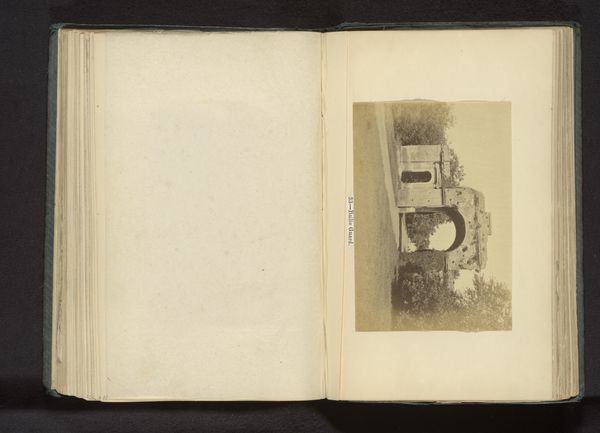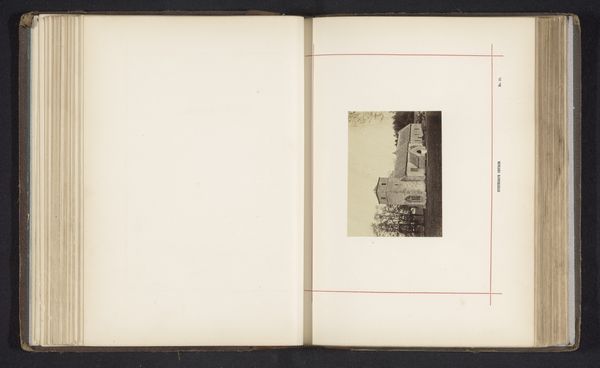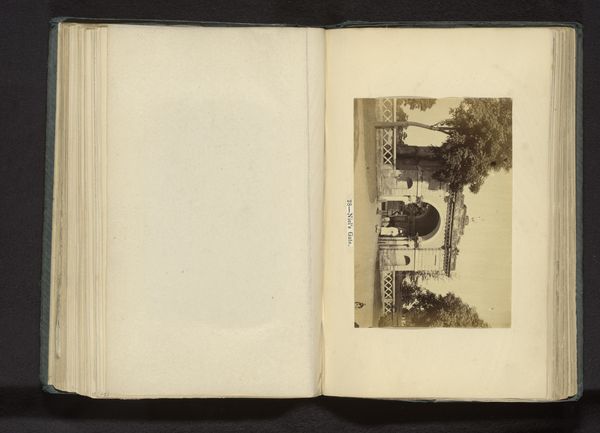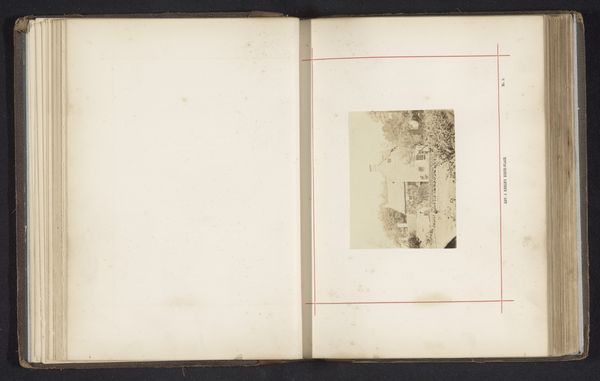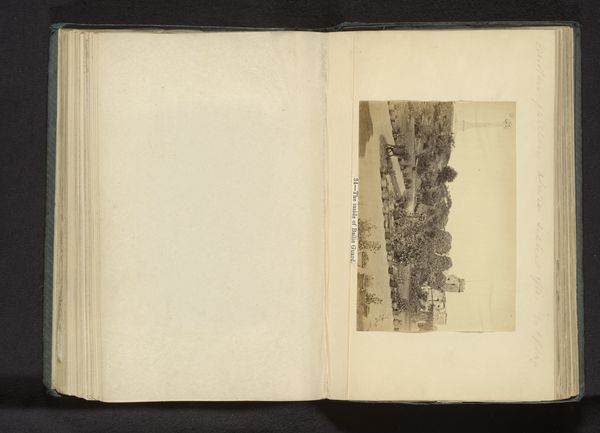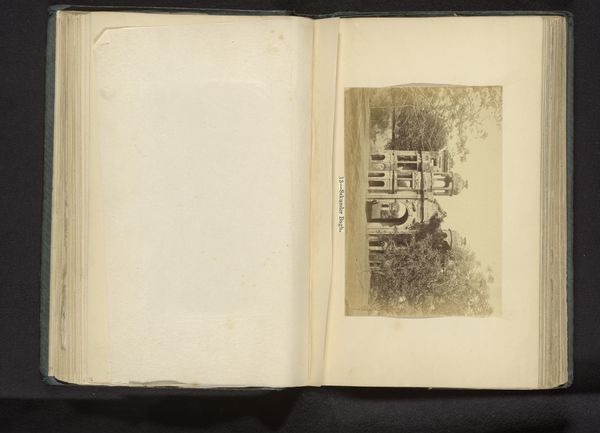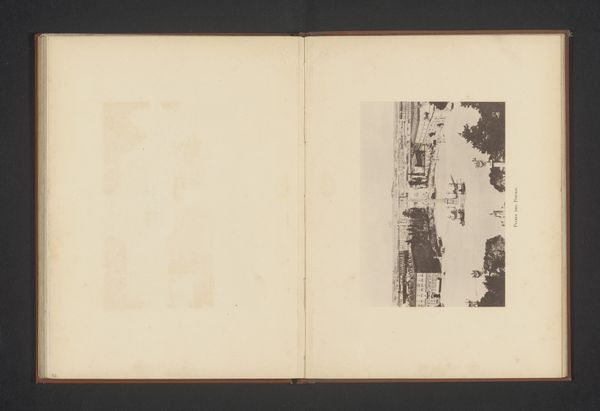
Gezicht op de Rumi Darwaza, de toegangspoort van Bara Imambara in Lucknow before 1874
0:00
0:00
print, photography, albumen-print
#
aged paper
#
homemade paper
#
paper non-digital material
#
paperlike
# print
#
sketch book
#
landscape
#
paper texture
#
photography
#
personal sketchbook
#
geometric
#
sketchbook drawing
#
cityscape
#
islamic-art
#
sketchbook art
#
design on paper
#
albumen-print
Dimensions: height 105 mm, width 154 mm
Copyright: Rijks Museum: Open Domain
Curator: Here, open in front of us, we have an image plucked from a sketchbook, an albumen print to be exact. It’s entitled "Gezicht op de Rumi Darwaza, de toegangspoort van Bara Imambara in Lucknow," and it’s attributed to Darogha Ubbas Alli, likely dating from before 1874. Editor: There's something quietly melancholic about this image. It feels faded, like a memory clinging to the page. The gateway is impressive, but it’s presented almost delicately, softened by time and the nature of its presentation in a personal sketchbook. Curator: Precisely. As an iconographer, what symbols jump out at you? Editor: The gate itself! In Islamic art, gates often symbolize passage—not just physical entry but also spiritual transitions, thresholds between worlds. The very architecture seems to be reaching upwards, almost towards enlightenment. And then there is that geometric decorative pattern running across the façade. The artist, or perhaps we should say the photographer, wants to call out geometry as divine proportion. Curator: Indeed. Now, thinking about the albumen print as a medium itself… it lends this kind of ethereal quality. It gives depth and makes the details feel, ironically, a bit more abstracted. This, coupled with it being in a sketchbook context, presents it as a sort of personal artifact. What does it say about cultural memory when placed inside this setting? Editor: It says memory is layered, doesn’t it? We have the Rumi Darwaza itself, a physical structure laden with historical and cultural significance. Then we have the photograph, capturing a moment in time, interpreted through the artist's lens. And finally, its existence within the personal pages of a sketchbook, hinting at the artist’s personal connection to it all. These different layers form echoes and resonances within us as we observe this presentation of this site, this architectural monument, today. Curator: Absolutely. The choice to capture it this way—in this aged paper sketchbook—speaks volumes about how we carry these grand public narratives alongside our private, intimate recollections. I now find the composition quite clever. The image almost whispers a dialogue across time, I think. Editor: It certainly invites quiet reflection, doesn’t it? And there's an undeniable pull—to contemplate not just the place, but the act of remembering it, by Alli, and subsequently by all of us now.
Comments
No comments
Be the first to comment and join the conversation on the ultimate creative platform.
